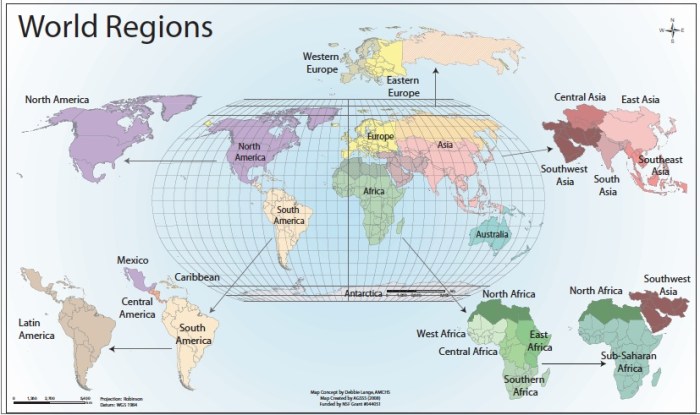Unit 4 frq ap human geography – Unit 4: FRQ AP Human Geography embarks on an extraordinary exploration of the intricate patterns and processes that shape our world. From population dynamics to cultural landscapes, political boundaries to economic systems, and environmental challenges, this unit delves into the multifaceted dimensions of human geography.
As we traverse this intellectual landscape, we will uncover the factors that influence population growth and decline, the mechanisms of cultural diffusion, and the forces that shape political systems. We will examine the complexities of economic development, urbanization, and environmental sustainability.
Population Patterns and Processes

Population patterns and processes are fundamental aspects of human geography, shaping the distribution, growth, and decline of human populations. Understanding these patterns and processes is crucial for addressing global issues such as urbanization, aging populations, and food security.
Types of Population Pyramids
Population pyramids are graphical representations of the age and sex distribution of a population. Different types of population pyramids provide insights into the demographic characteristics of a country or region:
- Expansive Population Pyramid:A broad base and narrow top, indicating a high birth rate and a relatively young population.
- Constrictive Population Pyramid:A narrow base and wide top, suggesting a low birth rate and an aging population.
- Stationary Population Pyramid:A symmetrical shape, indicating a stable birth and death rate.
Examples of Population Pyramids
Countries with different population pyramids face unique challenges and opportunities:
- Expansive Population Pyramid:India has a large youth population, which can provide a workforce for economic growth but also strain resources.
- Constrictive Population Pyramid:Japan has an aging population, which poses challenges for healthcare and pension systems.
- Stationary Population Pyramid:Germany has a relatively stable population, which provides a stable workforce and tax base.
Factors Influencing Population Growth and Decline
Population growth and decline are influenced by a complex interplay of factors:
- Fertility:The average number of children born to a woman.
- Mortality:The rate of death in a population.
- Migration:The movement of people into or out of a country or region.
- Economic Development:Higher levels of economic development often lead to lower birth rates and longer life expectancies.
- Cultural and Religious Factors:Social norms and religious beliefs can influence fertility and mortality rates.
Cultural Patterns and Processes
Culture encompasses the beliefs, values, customs, behaviors, and material objects that shape the lives of people within a society. It serves as a blueprint for interpreting the world, guiding interactions, and transmitting knowledge across generations.
Components of Culture
- Beliefs:Deeply held convictions about the nature of reality, morality, and the supernatural.
- Values:Principles that guide behavior and determine what is considered good or bad, right or wrong.
- Customs:Traditional practices and rituals that govern daily life, such as marriage, birth, and death.
- Behaviors:Patterns of action that reflect cultural norms and expectations.
- Material Objects:Artifacts, tools, and technologies that embody cultural values and beliefs.
Types of Cultural Diffusion
Cultural diffusion is the spread of cultural traits from one society to another. It can occur through:
- Direct Contact:Interaction between individuals or groups from different cultures, such as trade, travel, or conquest.
- Indirect Contact:Diffusion through intermediaries, such as books, media, or technology.
- Hierarchical Diffusion:Spread from a dominant culture to subordinate cultures, often through colonization or globalization.
- Expansion Diffusion:Expansion of a culture into new territories, such as through migration or conquest.
- Stimulus Diffusion:The borrowing of cultural ideas or elements while adapting them to the receiving culture’s needs.
Cultural Landscapes
Cultural landscapes are the visible imprint of human activity on the environment. They reflect the interactions between people and their surroundings, shaping the physical and social character of a place.
- Vernacular Landscapes:Landscapes shaped by everyday activities, such as farming, grazing, and housing.
- Relict Landscapes:Landscapes that preserve traces of past cultures or land uses, such as abandoned villages or ancient ruins.
- Ideological Landscapes:Landscapes created or modified to express cultural values or beliefs, such as national parks or religious sites.
Political Patterns and Processes

Political patterns and processes shape the governance and organization of human societies. They encompass the diverse ways in which power is distributed, exercised, and contested within and between nations.
Types of Political Systems
Political systems vary significantly in their structures, ideologies, and mechanisms of governance. Common types include:
- Monarchy:Power is vested in a single hereditary ruler (e.g., United Kingdom, Saudi Arabia).
- Republic:Power is held by elected representatives (e.g., United States, France).
- Dictatorship:Power is concentrated in the hands of a single leader or small group (e.g., North Korea, China).
- Democracy:Power is distributed among the people through elections and representative government (e.g., Canada, Switzerland).
Factors Influencing Political Boundaries
Political boundaries are the physical and administrative lines that divide nations and regions. Their formation and stability are influenced by various factors:
- History:Historical events, conquests, and treaties shape the location and form of boundaries.
- Geography:Physical features (e.g., rivers, mountains) can serve as natural boundaries.
- Culture:Shared ethnic, linguistic, or religious identities can lead to the formation of political units.
- Economics:Resource distribution and economic interests can influence boundary formation and disputes.
Geopolitical Power
Geopolitical power refers to the ability of a nation to influence and control events beyond its borders. It encompasses factors such as:
- Military strength:The size and capabilities of a nation’s armed forces.
- Economic power:The size and stability of a nation’s economy.
- Political influence:A nation’s ability to shape international decisions and alliances.
- Geographic location:The strategic importance of a nation’s territory (e.g., access to seaports, control over waterways).
Geopolitical power can have significant implications for international relations, conflict, and cooperation.
Unit 4 FRQ AP Human Geography explores the complexities of global interdependence and interconnectedness. To gain a deeper understanding of these concepts, consider reading Eleven by Sandra Cisneros . This thought-provoking novel delves into themes of identity, culture, and the immigrant experience, offering valuable insights that can enhance your analysis of global human interactions within Unit 4 FRQ AP Human Geography.
Economic Patterns and Processes
Economic patterns and processes are fundamental aspects of human geography, shaping the distribution of wealth, resources, and economic activities across the globe. This unit delves into the various types of economic systems, the factors influencing economic development, and the profound impact of globalization on economic patterns.
Types of Economic Systems
Economic systems are the frameworks that govern the production, distribution, and consumption of goods and services within a society. The primary types of economic systems include:
- Traditional economic systemsrely on customs, traditions, and inherited knowledge to guide economic activities.
- Command economic systemsare centrally planned by a government or other central authority, which allocates resources and sets prices.
- Market economic systemsare driven by the forces of supply and demand, with individuals and businesses making economic decisions based on their own interests.
- Mixed economic systemscombine elements of both market and command systems, allowing for a balance between private and public control.
Urban Patterns and Processes

Urbanization, the process of population concentration in cities, has profoundly shaped human society. Its causes include economic opportunities, improved infrastructure, and social amenities. Consequences range from increased productivity to environmental degradation.
Types of Urban Land Use Patterns
Urban land use patterns vary widely, influenced by factors such as history, culture, and economic development. Common patterns include:
- Concentric zones:A circular pattern with distinct zones radiating outward from the city center.
- Sector model:A wedge-shaped pattern with land uses concentrated in specific sectors.
- Multiple nuclei:A pattern with several centers of activity dispersed throughout the city.
- Edge cities:Suburbs that have become major employment and retail centers.
Urban Sustainability
Urban sustainability aims to balance economic growth, social equity, and environmental protection in urban areas. Challenges include:
- Pollution and waste management:Cities produce significant amounts of pollution and waste.
- Traffic congestion and transportation:Urban areas often face traffic congestion and inadequate transportation systems.
- Urban sprawl and land use planning:Uncontrolled urban expansion can lead to environmental degradation and social inequality.
li> Housing affordability and homelessness:Cities can experience high housing costs and homelessness.
Environmental Patterns and Processes: Unit 4 Frq Ap Human Geography

Environmental patterns and processes encompass the interactions between humans and their physical surroundings. Understanding these dynamics is crucial for addressing global challenges such as climate change, pollution, and resource depletion.
Types of Environmental Hazards
Environmental hazards are events or conditions that pose a threat to human health and well-being. They can be classified into:
- Natural hazards:Caused by natural forces, such as earthquakes, hurricanes, floods, and wildfires.
- Human-induced hazards:Resulting from human activities, such as pollution, climate change, and deforestation.
Environmental hazards can have devastating impacts on communities, causing loss of life, property damage, and disruption of livelihoods.
Factors Contributing to Environmental Degradation
Environmental degradation refers to the deterioration of the Earth’s natural resources and ecosystems. It is driven by various factors, including:
- Population growth:Increasing human population puts pressure on resources and leads to increased pollution and waste.
- Industrialization:Manufacturing and other industrial activities release pollutants into the environment.
- Agricultural practices:Intensive farming techniques can lead to soil erosion, water pollution, and deforestation.
- Transportation:Burning fossil fuels for transportation contributes to air pollution and climate change.
These factors interact in complex ways, exacerbating environmental degradation and posing challenges to sustainable development.
Sustainable Development, Unit 4 frq ap human geography
Sustainable development aims to meet the needs of the present without compromising the ability of future generations to meet their own needs. It requires balancing economic growth with environmental protection and social equity.
Challenges to sustainable development include:
- Balancing economic interests:The pursuit of economic growth can lead to environmental degradation.
- Lack of political will:Implementing sustainable policies can be politically challenging.
- Technological limitations:Some sustainable technologies are not yet cost-effective or widely available.
Overcoming these challenges requires collaboration among governments, businesses, and individuals to create a more sustainable future for our planet.
Questions and Answers
What is the significance of population pyramids?
Population pyramids provide valuable insights into the age structure and growth potential of a population, helping us understand demographic trends and their implications for society.
How does culture influence human-environment interactions?
Culture plays a crucial role in shaping how people perceive, value, and interact with their environment, leading to diverse cultural landscapes that reflect the unique values and beliefs of different societies.
What factors contribute to geopolitical power?
Geopolitical power is influenced by a complex interplay of factors, including military strength, economic resources, geographic location, and diplomatic alliances.
How does globalization impact economic patterns?
Globalization has fostered increased interconnectedness and interdependence among economies, leading to both opportunities and challenges for economic development.
What are the challenges of urban sustainability?
Urban sustainability faces challenges such as managing population growth, reducing pollution, promoting affordable housing, and ensuring access to essential services while preserving the environment.